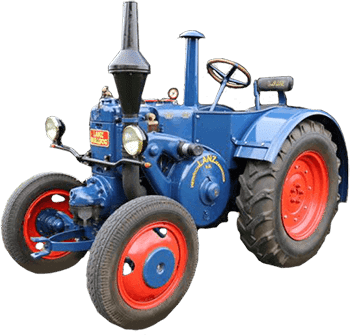February 4, 2021
Restoring a Two-Wheel Bolens Garden Tractor
By Sandy Stockham, sandistockham@gmail.com
Originally published in Lawn & Garden Tractor Magazine.
A friend emailed me to say he was bringing a container back from the United States and asked whether there was anything we wanted brought back, so we sent him a picture of what we wanted. Within a month, we were on our way to Somerset to pick up a 1957 two-wheel Bolens Versa-Matic with a large snow blower (now always hoping for some serious snow every winter!). The Versa-Matic had been outside—discarded for a long while. The engine was not running, but it did turn over. We knew we were in for a complete restoration.
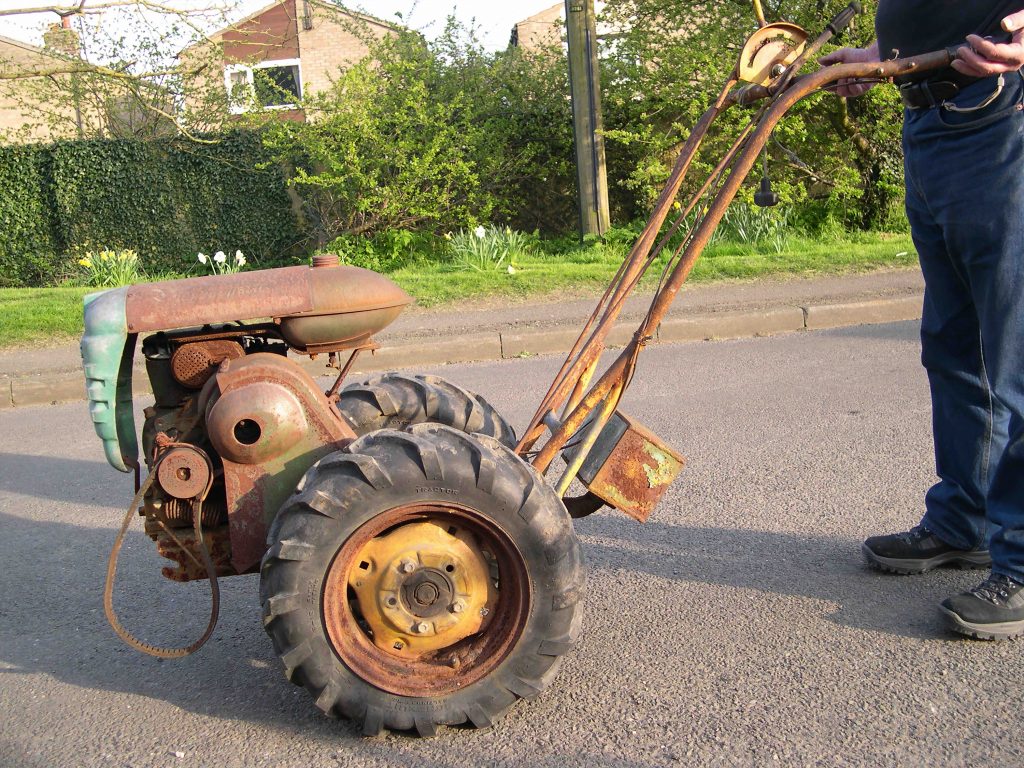
We are quite a good team in the Stockham household when it comes to new projects. While Roger is deep into machinery work, I am researching, taking photos, and talking to lots of people. Apart from the social side, I see to the painting/spraying. After copious quantities of penetrating oil, the dismantling commenced. A few pictures were taken along the way to aid rebuilding (300+).
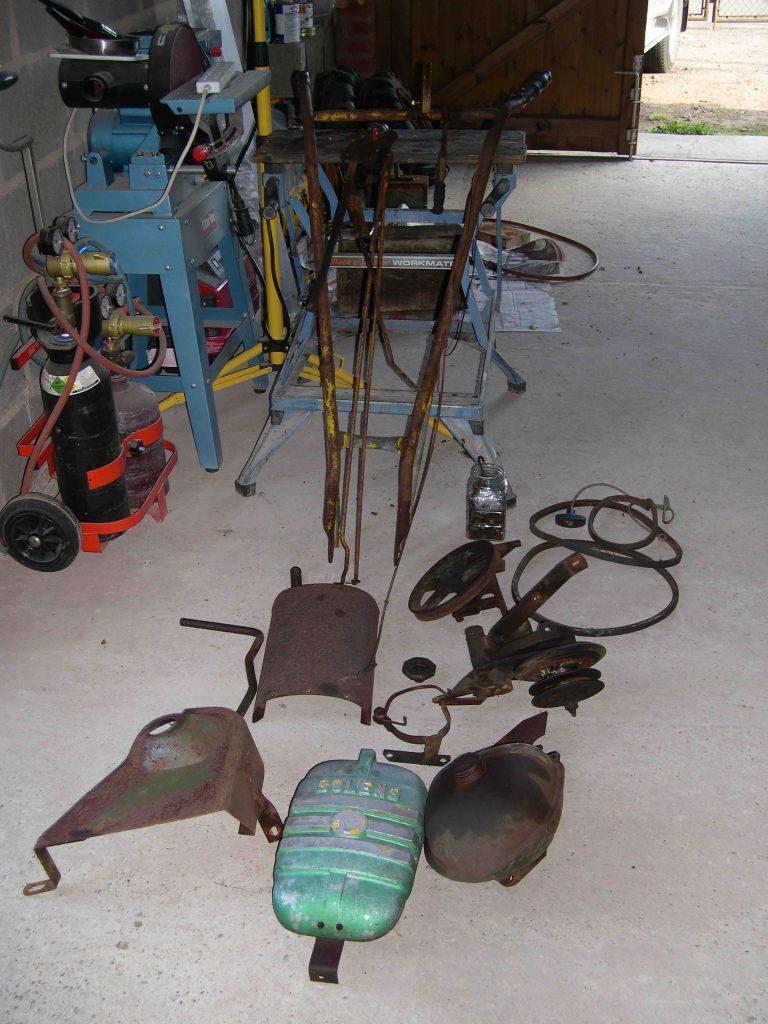
The engine was removed, and years of accumulated muck cleaned off. It immediately became apparent that, at some point in time, the engine had thrown a con rod, and this had done quite a bit of damage to the cast iron crankcase. Soon a strip down was started. The cowlings were removed to find a mouse nest inside. The mouse had probably vacated its home only when the casings became so rusted that water leaked in to ruin its abode.
All the ancillary engine parts were left to soak in various fluids prior to examination. Surprisingly, the bore was clean and coated in oil with no discernible wear, and the bottom end felt reasonably tight, so the crankcase was not split. A gamble! But, surprisingly, there had been no water in the sump oil. The flywheel popped off with no trouble, and confidence was steadily increasing.
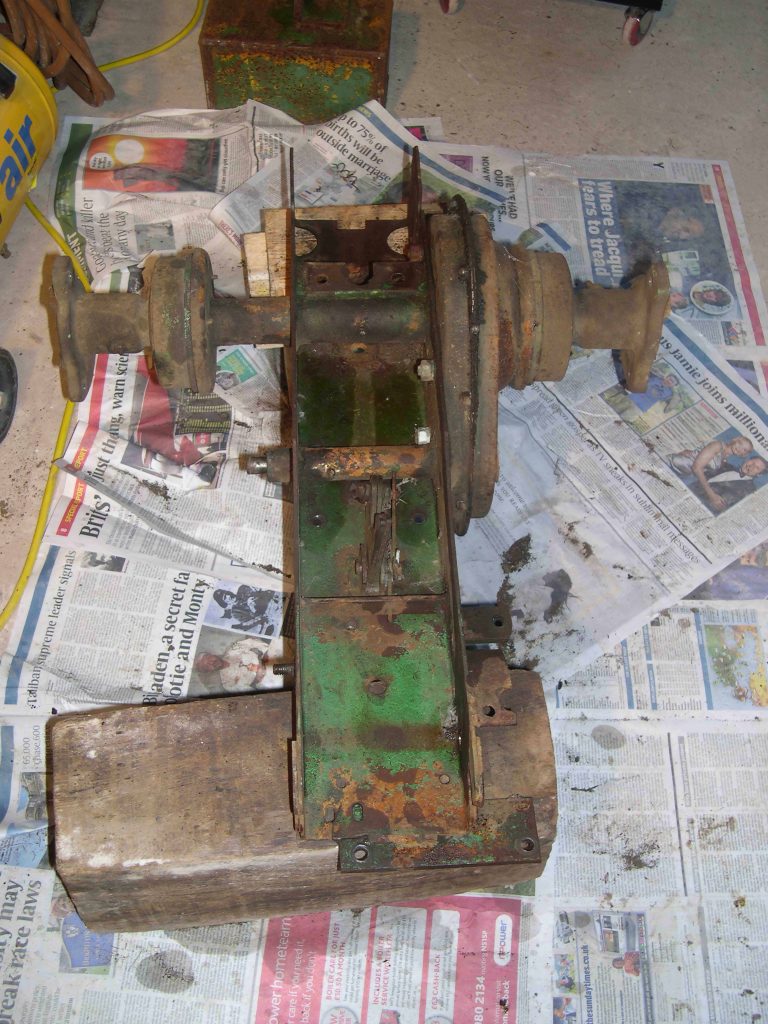
The ignition system was an obvious write-off, which was going to be a problem. The engine is a 6.6hp Kohler K160 which is an engine that Kohler UK claimed was never made; however, we now have two, both with Kohler tags. When a coil failed on the other K160, Hancox (our local small engine dealer) eventually found one but hoped it would last 50 years too, as there were certainly no others.
Luckily, after a long search on the net, we found a former Kohler representative located in the U.S. who had retired some years back. We contacted him, and he knew the coil and knew the engine! Yes! He had two coils, and he was willing to ship to the United Kingdom! We cleaned him out of his stock. Roger spent hours talking engines with him as he was a mine of useful information.

The heavy corrosion on all the aluminum parts of the engine was cleaned up. The valves were reground, and the head was temporarily fastened down. Lo and behold, there was compression. The governor was completely seized up, so, following a week’s soak in penetrating fluid, it was split up to its components and renovated.
The exhaust studs had to be drilled out, the holes tapped, and a pair of stainless-steel studs turned up on the lathe. The carburetor was horrible—it had been full of dirty water for a very long time, and common sense said we should replace it (as we had one on a spare engine), but we have no sense and were determined to use as much of the original bits as possible.
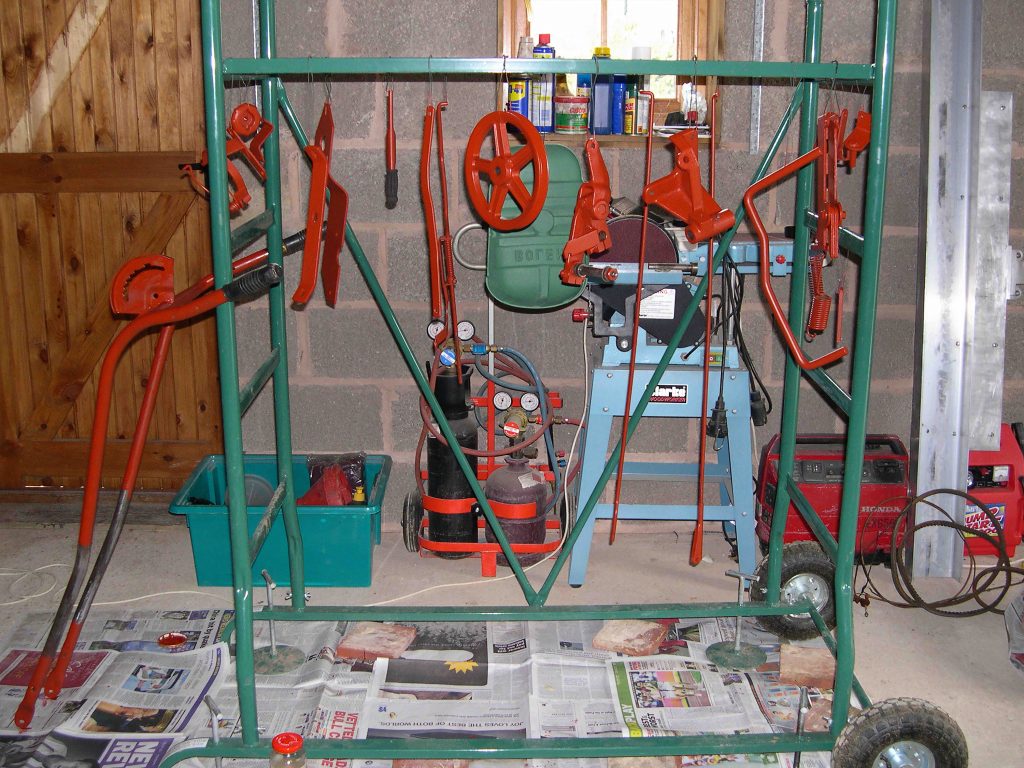
This part of the restoration burnt up many hours (an interesting point is that the jet needle is hollow), and cleaning corrosion out of a carburetor is fiddly, to say the least. There were no screw-in jets as the manual said; they were all interference fits. Better than screw-in or not?
We found enough of the original paint in one of the wheel hubs: a light metallic green. Why was Bolens using a single coat metallic paint in 1957? So, off to our local paint dealer who color-matched and profiled for enamel paint. We decided we would brush the paint.
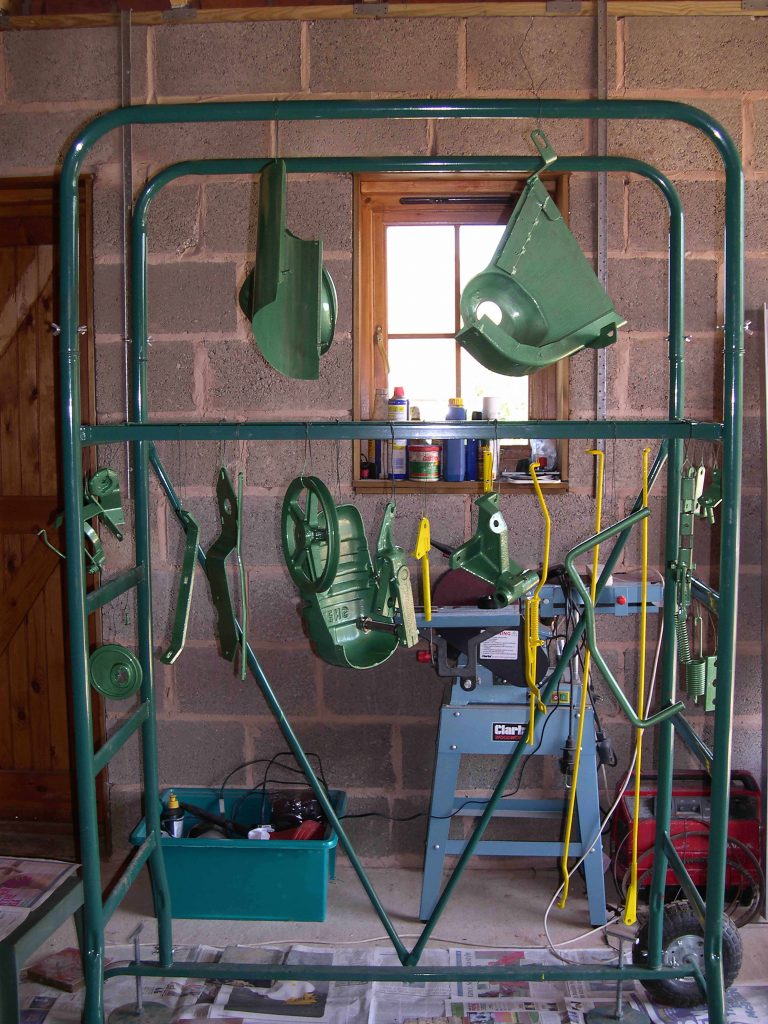
I was really excited about the results of the first coat of paint, and, within a few days, the first coat was dry enough to attempt a second one. When I started to shake and stir the paint, I could not get it to mix. So, I headed back to paint depot for a lesson or two on metallic enamel painting.
The technician was very good, but said metallic painting was very difficult and would only get good results if rolled or sprayed. I was very grateful for all the help and advice, but I was beginning to think we were in for a bumpy ride.
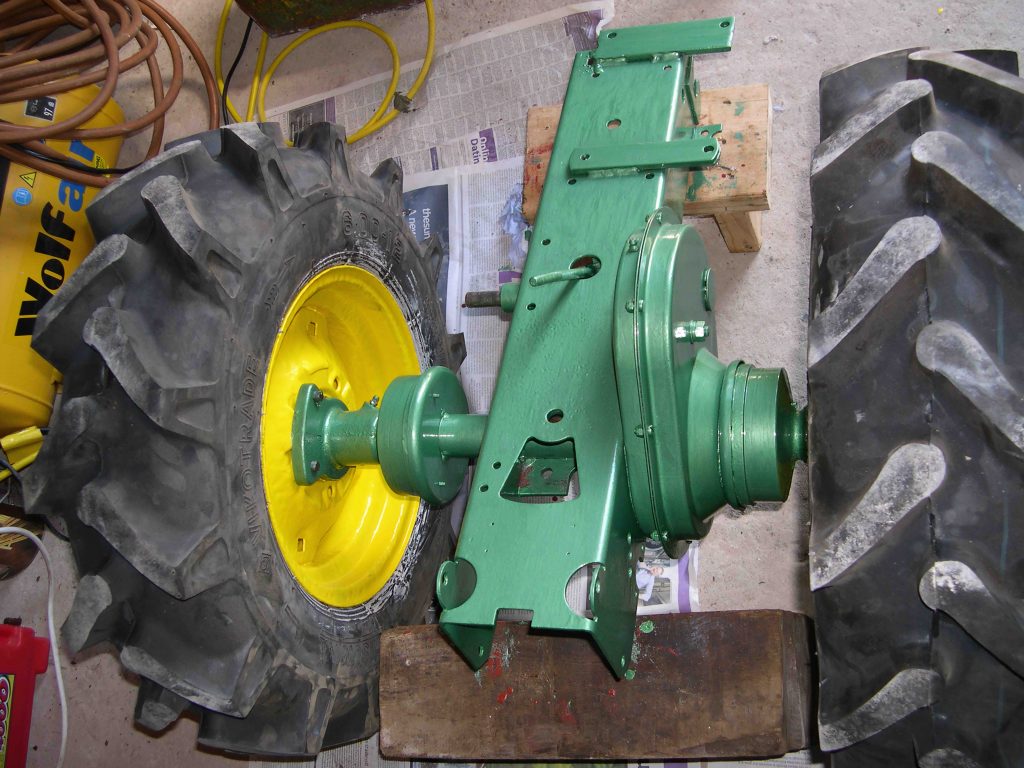
We made a stirring tool from an old electric mixer, fitting it to an electric drill in a stand. The paint was mixed slowly to a consistent colour. For the cast parts, we brushed a second coat, and, for the smooth ones, we used a roller. What a disaster… not at all like the demo we had seen at the Peterborough vintage tractor show!
Once dry, we had to sand it down and give spraying a shot. We ordered an HVLP spray gun, but now required a spray booth. We made room in one corner of the garage and constructed a square bay from some fancy poles, held together with plastic balls along with some dust sheets. The painting took two more coats to get it right.
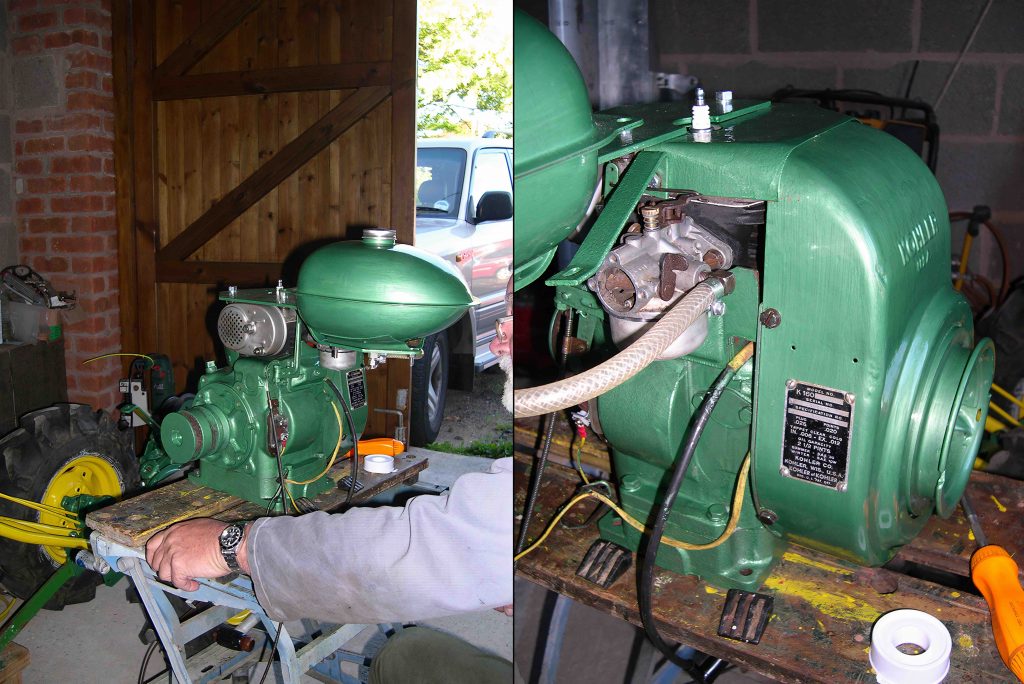
The ignition parts arrived from the USA, and we decided to throw the engine together with the old gaskets to see whether it would show some life and to check that the bottom end was really okay. Despite the leaking head gasket, the engine showed signs of life—this being provoked by the use of an electric drill on the crankshaft end.
However, it would not run, so the carb was taken off and given another cleaning. This worked and the engine ticked over with no horrible rattles. Then, we stripped the engine again and cleaned it up for painting. Whilst wiping it over with thinners, we found a tiny hairline crack between two of the welds on the casing (paint thinners seem to be as good as Ardrox crack detector); as it had probably been there since the mishap, we decided to use a bead of plastic metal rather than reweld it. The barrel was painted in cylinder black and the engine in the metallic green.

The engine was reassembled, and it was time to decide what to do about the cowlings. Two could obviously be saved; the third was nearer to a colander than a cowling. We took the cowling off the next project tractor and prepared it. That week a set of cowlings came up on eBay, so we purchased those to replace the one we removed.
The engine was finished and installed; it started easily but refused to run above 1000 rpm. Nothing we did would make any difference (this is the point that the carb changes from the idle jet to the main jet), so another carb clean and setup was called for. This did not solve the problem, so, finally, we tried another carb to no avail.
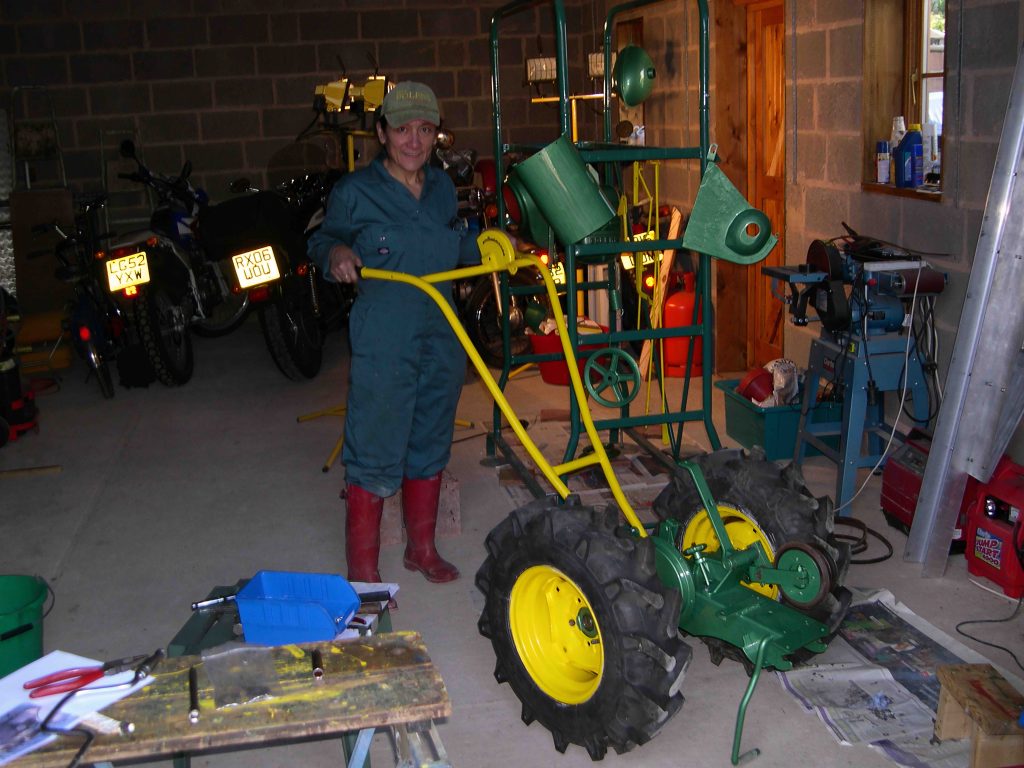
We stripped and checked the ignition, but nothing was apparently wrong. We also changed the points, condenser, and control rod to no avail. We had wasted three weeks on this problem without coming close to solving it. Time for some drastic inaction. Roger collected a chair and some cans of beer, locked himself in the garage, and sat there looking at it and drinking.
Some hours of contemplation later, he decided it had to be the points. (The retired guy in the U.S. had told him to look at the actuating rod.) In the end, we had to replace it when nothing else worked.

This train of thought led us to wonder whether the points were not closing properly at speed. But then why it would occur at such a precise speed? The feeler gauge revealed that the rod had a 2-thousandth gap when the points were closed, so it should have been okay.
As there seemed nothing else to try, Roger increased this dramatically by reducing the points gap. It worked, and the engine ran smoothly at speed. Next, he decided to ascertain the minimum gap required to maintain operation by steadily reducing the gap until it would not rev over 1000 rpm; the minimum gap proved to be 4-thousandth.
He still has not thought of a reasonable explanation, but has gained some useful knowledge as we have eight Kohler engines with this ignition system.
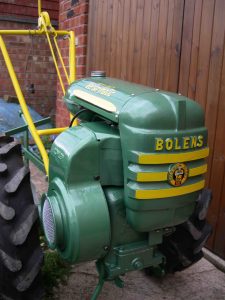
The drive belts were installed to the Versa-Matic system and the control rods adjusted. This is a very simple and effective drive system but does require a careful initial setup. The missing oil bath air filter was a part that was no longer available.
Fortunately, the same filter was used on a few other small tractors. We soon found three for sale on eBay in the States, so we bid for all three and got two. The second one will be useful for the next project. The gear lever was solid and totally rusted, so it was left soaking in some powerful homemade mixture for releasing seized parts known as “Le Mix,” which is truly disgusting but works.
It did, in the end, give way, but unfortunately, it was so rusty and bent that we decided to make a new one. Roger soon recreated a stainless-steel gear lever on the lathe that will not rust in a hurry.
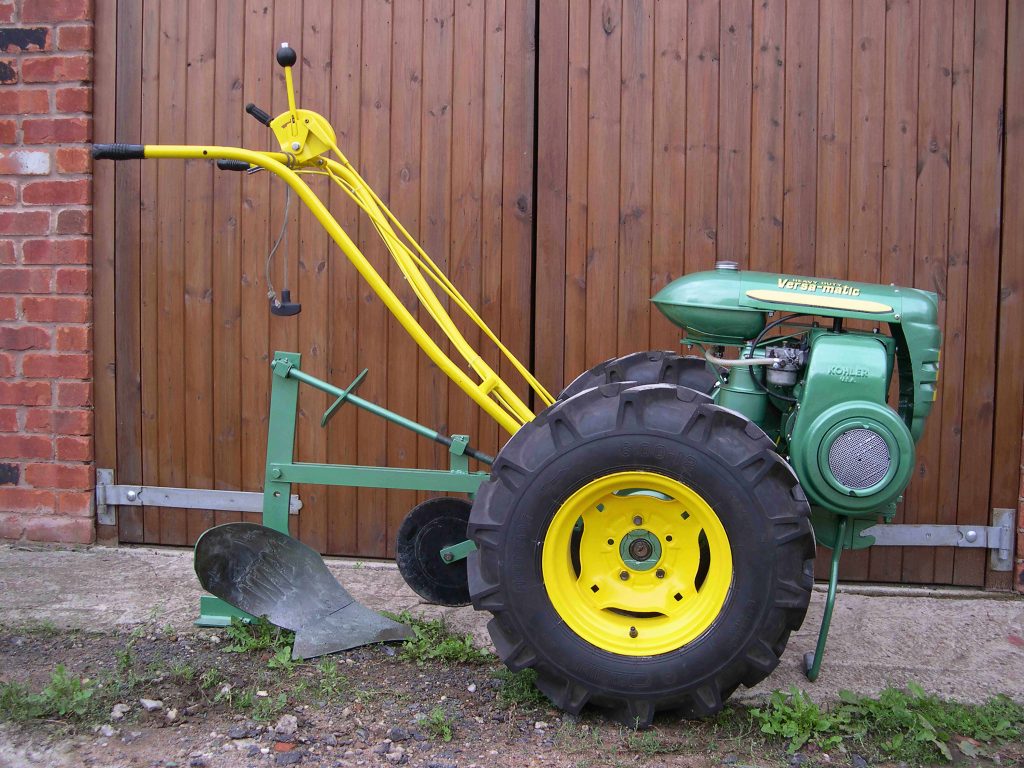
The original wheels were totally rusted out. We found that another tractor awaiting restoration had the same rear wheels, but not quite as rusty, so we swapped them. We cleaned these and painted them with a high-build epoxy undercoat mixed by the same depot to the same color as the yellow topcoat. Ace Tyres (our local tyre dealer) supplied the tyres; we found them very helpful and well-priced. How they fit the tyres leaving no marks on the rims I have no idea.
With most of the parts ready, we started assembly. We needed an implement to use at working rallies (could not rely on there being snow over summer). We were looking through some original sales brochures and found that the Versa-Matic plow was similar to one on a later Ride-a-Matic, of which we had two. With some steel bar and welding, it did not take long to turn one into the earlier model—time for a drive.

I was very surprised at the power the Versa-Matic had. While Roger seems to handle it fairly well, I was having problems with it pulling away from me. The fact that the machine had no brakes lingered in the back of my mind, so I was holding it back. I’m still a bit in awe of its power.
We are quite chuffed with the results. We have done some renovation projects in the past, but the Versa-Matic is the only machine that needed a complete restoration. But, let’s face it, anything else was not an alternative. We wanted the machine to be original, but also used and worked, so we retained all the original parts where at all possible, including most of the bolts.
It was quite an experience with all the challenges along the way—Roger with the engine troubles and me with the paint difficulties. However, we made many contacts along the way. It was rewarding to find like-minded individuals who were willing to share their expertise and part with some very useful advice.
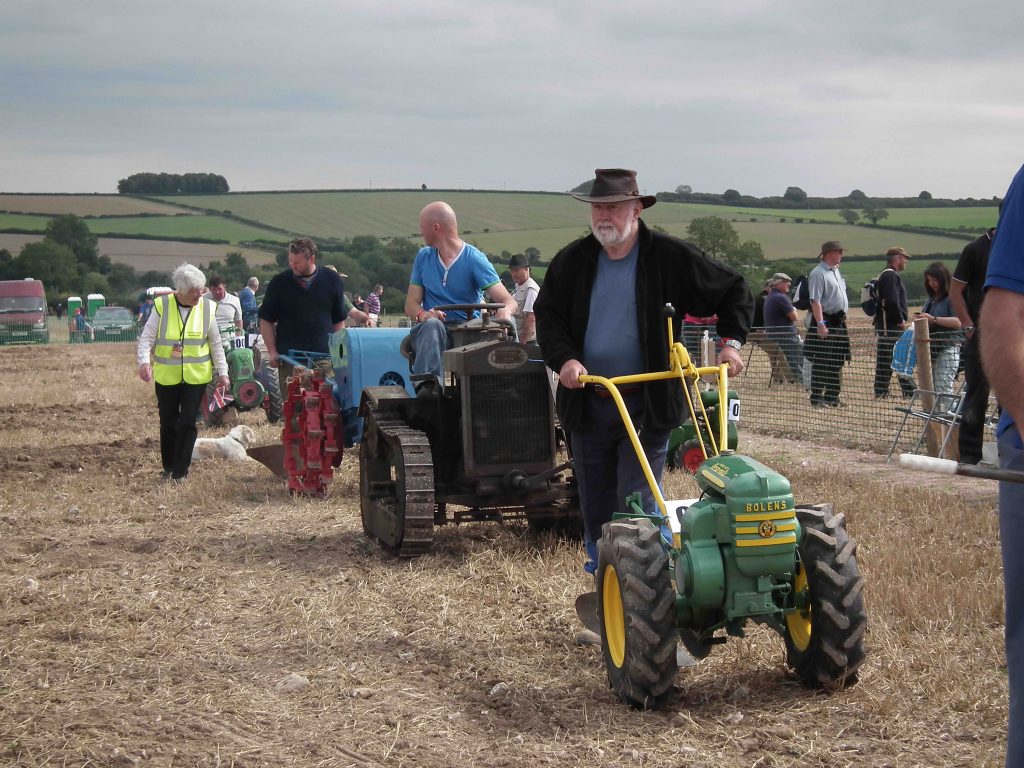
Its first rally was a week at the Great Dorset Steam Fair, and it has had a few outings since. At first, we were a bit apprehensive that we would scratch or dent it, but, after a few months, we decided that we restored it to use it. It had its concours days in the beginning, but it now has scratches and dents, and we still love it all the same.
It is interesting to note that in heavier plowing conditions, the two-wheeler produces a better result than the 1957 Bolens four- wheel tractor with an identical plow.
Want to read more articles like this? Be sure to check out Lawn & Garden Tractor Magazine at http://www.lagtmag.com/
